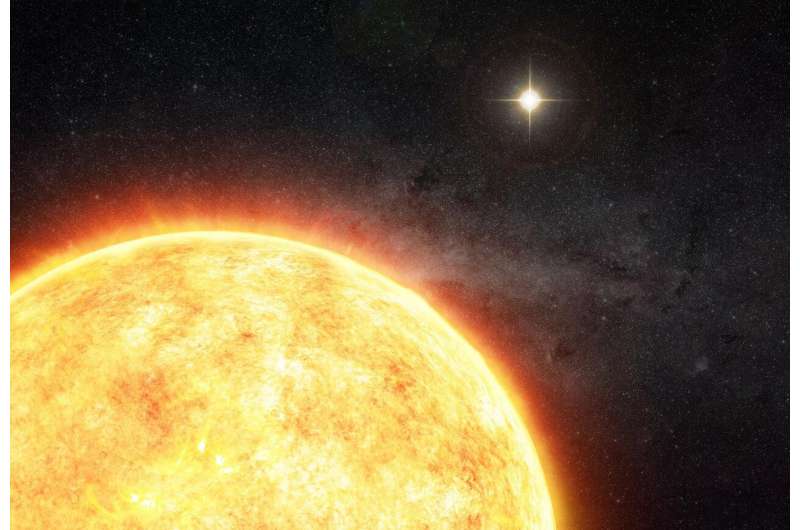All stars might form in multiple-star systems, and simply drift apart – or fling their partners away – over time.

A cloud of gas and young stars in the Perseus molecular cloud may be revealing a strange truth to the universe: most, if not all, stars are born in pairs. This means that somewhere out there, the Sun has a lost companion — and it may be one of several known stars.
Essentially, all stars form in molecular clouds. In the Perseus observations, nearly all of these stars were gravitationally bound. This may be a requirement of protostars — the egg-like objects could require a common center of gravity with a companion to accumulate mass.
The dense cores then use leftover material to form more stars, continuing the process.
So where is the Sun binary companion?
It seems that 60 percent of stars shed their binary sister over time, gaining a wider distance from their partner until they are gravitationally severed.
They also may not all have the same symmetry with regard to mass, meaning that some former companions could be brown dwarfs cast out by larger stars.
The authors of the astronomy paper say more work is needed to confirm their hypothesis. But if it’s true, the hunt may be on for the companion the Sun once had.
Another more recent paper in the Astrophysical Journal Letters shows that the existence of a long-lost stellar binary companion in the sun’s birth cluster would explain the formation of the Oort cloud as we observe it today and even would explain that Planet Nine was captured rather than formed within the solar system.
If the sun did have an early companion that contributed to the formation of the outer solar system, its current absence begs the question: where did it go?
“Passing stars in the birth cluster would have removed the companion from the sun through their gravitational influence,” explains an astronomer and continues: “Before the loss of the binary, however, the solar system already would have captured its outer envelope of objects, namely the Oort cloud and the Planet Nine population.”
This means that the sun’s long-lost companion could now be anywhere in the Milky Way, isnt it? [ArXiv, ArXiv, phys.org, Astronomy]
Now subscribe to this blog to get more amazing news curated just for you right in your inbox on a daily basis (here an example of our new newsletter).
You can also follow us on Facebook and/ or Twitter. And, by the way you can also make a donation through Paypal. Thank you!
You should really subscribe to QFiles. You will get very interesting information about strange events around the world.













☀️☀️
☄